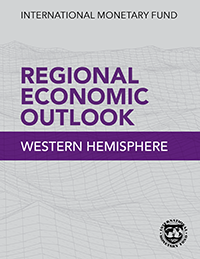Costa Rica: At a Glance
- Current IMF membership: 190 countries
- Costa Rica joined the Fund on January 8, 1946
- Country population: 5.285 million
- Quota: SDR 369.4 million
- Special Drawing Rights (SDR): 438.81 million
- Number of arrangements since membership: 18
- Outstanding Purchases and Loans (SDR): 988.2 million (December 31, 2022)
- Latest Article IV/Country Report: March 1, 2021
- Current IMF arrangement: Latest Report (November 14, 2022)
Office Activities
Who we are
The Resident Representative Office in Costa Rica was opened in July 2021 by Julia Bersch as the inaugural Resident Representative. Mr. Santiago Acosta Ormaechea became the second Resident Representative in December 2022. The Office is composed by the Resident Representative along with three local employees, a local economist, office manager and driver.
What we do
The IMF Resident Representative office in Costa Rica functions as a liaison between the IMF headquarters and the Government of Costa Rica with a primary focus to support the Fund’s Extended Arrangement under the Extended Fund Facility (EFF) and Request for an Arrangement Under the Resilience and Sustainability Facility (RSF) for Costa Rica. In that capacity, the office follows economic developments and policies in Costa Rica, liaises between the Costa Rican authorities, think tanks, civil society and labor unions and IMF staff in Washington, and coordinates IMF technical assistance. It is also a source of information about IMF views for the public, local and foreign analysts, investors, academic and research institutions, and Costa Rica’s international partners and their diplomatic missions.
IMF's Work on Costa Rica
-
Conclusions of the XVIII Regional Conference on Central America, Panama, and the Dominican Republic
July 30, 2024
San Jose – July 30, 2024: Central bank governors, finance ministers, and bank superintendents of Central America, Panama, and the Dominican Republic (CAPDR), and IMF officials met in San Jose, Costa Rica, on July 29-30 to review the regional economic outlook and discuss policy measures needed to tackle key structural issues facing the region. The First Vice-President of the Republic of Costa Rica, Stephan Brunner, and the IMF’s Deputy Managing Director, Kenji Okamura, inaugurated the conference.
-
Raising Productivity Growth in Central America, Panama and the Dominican Republic
July 29, 2024
It is my great pleasure to welcome you to the 18th Regional Conference on Central America, Panama, and the Dominican Republic, co-hosted this year with the Central Bank of Costa Rica. I would like to thank the First Vice President of Costa Rica, Stephan Brunner and the Governor of the Central Bank, Róger Madrigal López. This conference serves as an opportunity to hold a frank and open dialogue on regional and global developments, common challenges, and policy priorities.
-
July 22, 2024
The President of the IDB and the Managing Director of the IMF Outline Enhanced Partnership to Better Support Latin American and Caribbean Countries
-
XVIII regional conference on Central America, Panama, and the Dominican Republic
July 22, 2024
-
June 14, 2024
The Executive Board of the International Monetary Fund (IMF) completed today the sixth review of Costa Rica’s economic reform program supported by the IMF’s extended arrangement under the Extended Fund Facility (EFF). Completion of this review makes available SDR 206.23 million (about US$ 272 million), bringing total disbursements under the arrangement to SDR 1237.49 million (about US$ 1.6 billion).
Regional Economic Outlook

Western Hemisphere
Regional Economic Outlook
October 2022Recent developments in the Western Hemisphere—that is, the United States/Canada and Latin America and the Caribbean (LAC)—have been dominated by the impact of two distinct global shocks: the COVID-19 pandemic and then the Russian invasion of Ukraine. A third shock—the tightening of financial conditions—is now shaping the outlook. After contracting sharply in 2020, most of the Western Hemisphere’ economies recovered strongly in 2021 and early 2022, helped by the global recovery, the normalization of service sectors, and booming commodity prices. However, inflation pressures built up with pandemic-related disruptions, expansionary policies, rebounding demand, and the impact of the war in Ukraine on energy and food prices. The swift response of LAC’s monetary authorities to rising inflation—well ahead of other economies—helped contain price pressures and keep long-term inflation expectations anchored, but inflation remains high. Amid global monetary and financial tightening, and the ensuing slowdown in global growth and softening of commodity prices, activity is expected to decelerate throughout the Western Hemisphere in late 2022 and 2023, while inflation pressures are expected to recede gradually. Downside risks dominate the outlook and stem from tighter financial conditions, a more pronounced global slowdown, and entrenched inflation. For LAC, a sharp fall in commodity prices and social unrest are important risks. With inflation yet to abate and most economies still operating at or near potential, monetary policy should avoid easing prematurely and must stay the course. Clear communication of policy intentions will be key to reducing uncertainty and keeping inflation expectations anchored. Fiscal support deployed to mitigate the impact of inflation on the most vulnerable should be accompanied by compensating measures, where fiscal space does not exist, but also support monetary authorities’ efforts to tame inflation. Given rising financing costs, strengthening fiscal frameworks and advancing with inclusive fiscal consolidation—that protects key social objectives—will be essential to credibly putting public debt on a firm downward path while ensuring social stability. Boosting LAC’s medium-term growth requires raising productivity and good-quality public and private investment. Supply-side policies should focus on strengthening human capital, simplifying and modernizing labor regulations, and lifting barriers to firm entry and exit.
Read more: Regional Economic Outlook for the Western Hemisphere, October 2022



